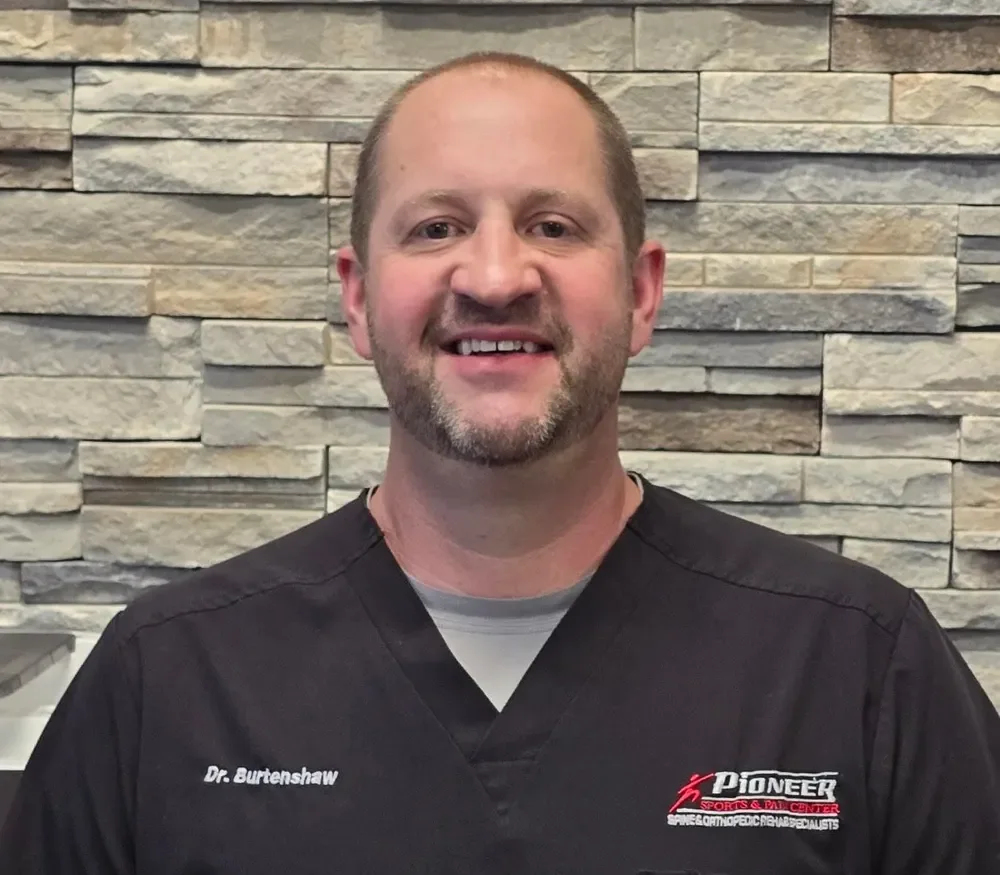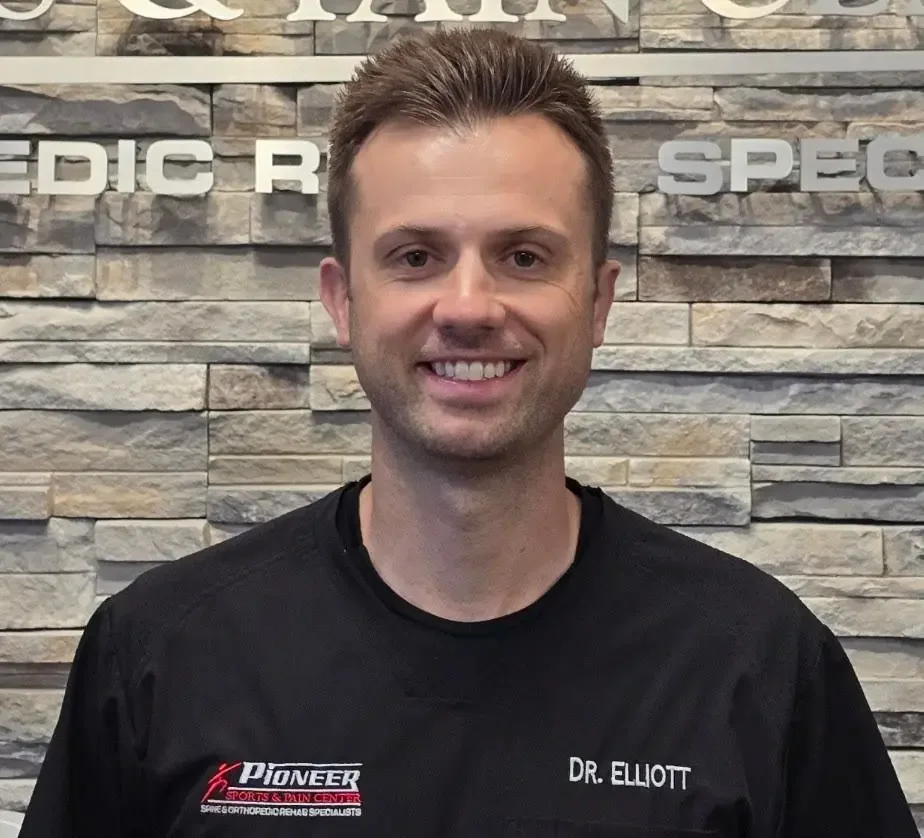Body Tempering in Kuna, ID
Crush Muscle Stiffness and Improve Mobility With Targeted Myofascial Loading
At Pioneer Sports & Pain Center in Kuna, Idaho, we offer Body Tempering—a cutting-edge soft tissue therapy originally developed for elite strength athletes and now used clinically to improve mobility, decrease pain, and accelerate recovery across all fitness levels.
Body Tempering uses heavy, cylindrical steel rollers applied to muscles and fascia to create deep, controlled compressive force. This helps break down adhesions, improve circulation, and lengthen tight tissues more effectively than traditional foam rolling or massage. When integrated into our chiropractic and rehabilitative programs, Body Tempering offers unparalleled benefits for both injury recovery and sports performance.
What Is Body Tempering?
Body Tempering is a form of myofascial compression therapy that uses external load (typically 50–150 lbs depending on the patient and treatment area) to apply deep pressure to soft tissues. The pressure is static or oscillatory, delivered via a large cylindrical steel implement placed strategically over muscle groups.
It was developed by Donnie Thompson—world-record holding powerlifter—to reduce muscular pain and tightness, improve mobility, and prepare the body for training or recovery. Clinically, it provides a highly effective way to:
- Loosen dense, stiff muscle groups
- Desensitize overactive tissues
- Improve neuromuscular tone
- Restore fascial glide
- Prime tissue for rehab or athletic movement
Clinical Benefits of Body Tempering
- Increases passive range of motion
- Reduces delayed onset muscle soreness (DOMS)
- Breaks down fibrotic adhesions and scar tissue
- Improves tissue perfusion and nutrient delivery
- Resets muscle spindle activity to reduce tone
- Decreases muscle guarding and compensation patterns
- Complements chiropractic, dry needling, and rehab care
How Body Tempering Works: A Physiological Perspective
-
Deep Fascial Release
By compressing multiple layers of tissue, Body Tempering provides shearing and decompression to stuck or adhered fascia, improving glide between muscles and surrounding structures.
-
Pressure-Induced Vasodilation
Tempering stimulates local nitric oxide release, increasing blood flow and flushing metabolic waste products from overused muscle groups.
-
Mechanoreceptor Stimulation
Large amounts of compressive force activate mechanoreceptors in the fascia and connective tissue, promoting down-regulation of pain signals and improved neuromuscular awareness.
-
Enhanced Recovery
Post-exercise, tempering can help reduce inflammation and expedite the return to training by offloading tight or reactive muscles and promoting parasympathetic (rest-and-digest) activity.
What Conditions Can Body Tempering Help With?
Body Tempering is especially effective for patients with:
- Chronic muscle tightness and stiffness
- Post-exercise soreness (DOMS)
- Fascial restriction and immobility
- Myofascial pain syndrome
- Poor soft tissue glide and neural tension
- Postural overload and compensation
- Strength training or powerlifting-related strain
- Pre-training tissue preparation and mobility work
Common Areas Treated with Body Tempering
- Quadriceps – Reduces tension and prepares for squatting or lunging
- Hamstrings and Glutes – Loosens posterior chain for hip mobility and performance
- Calves and Achilles – Improves ankle dorsiflexion and reduces plantar strain
- Thoracic Spine and Lats – Restores mobility and improves posture
- Traps and Shoulders – Releases tension and improves scapular movement
- Forearms and Grip Muscles – Excellent for repetitive strain injuries or overhead athletes
What to Expect During a Session
Evaluation and Setup
We begin with a musculoskeletal and mobility assessment to determine the best treatment zones and sequence. Your therapist will determine which weight and tempering tool is appropriate.
Tempering Application
You’ll lie comfortably while the tool is applied to targeted muscle groups. The pressure is firm but controlled and can be static, rolling, or oscillatory depending on your needs.
Treatments typically last 15–30 minutes and may focus on one or more regions of the body depending on your symptoms and goals.
Integration with Other Therapies
Body Tempering is often combined with:
- Chiropractic adjustments
- Cupping or dry needling
- Active stretching or rehab exercise
- Blood Flow Restriction (BFR) therapy
- Athletic performance enhancement sessions
Is Body Tempering Safe?
Yes—when performed by trained professionals. At Pioneer Sports & Pain Center:
- We use graded pressure appropriate for each patient’s body type and condition
- All tempering tools are professionally designed with rounded edges and weight balance
- Our providers are trained in anatomy, biomechanics, and soft tissue techniques to avoid overpressure or contraindications
- Patients are monitored closely to ensure comfort and effectiveness
Who Should Consider Body Tempering?
- Athletes preparing for competition or recovering from intense training
- Manual laborers or desk workers with dense, restricted muscle groups
- Post-rehab patients seeking to restore soft tissue balance
- Older adults with age-related tissue rigidity
- Anyone struggling with chronic tightness, stiffness, or restricted movement
Why Choose Pioneer Sports & Pain Center for Body Tempering in Kuna?
- Advanced Clinical Expertise: Our team has extensive training in sports performance and manual therapy, ensuring safe and effective application.
- Integrated, Whole-Body Approach: Tempering is one tool in a larger care strategy combining chiropractic, soft tissue work, and rehab.
- Customized Treatment: Sessions are tailored to your movement goals, pain levels, and training cycle.
- Local Care You Can Trust: We’re proud to help patients throughout Kuna, Meridian, Nampa, and the Treasure Valley reach their full potential—pain-free.
Frequently Asked Questions (FAQ)
Does Body Tempering hurt?
You may feel firm pressure and mild discomfort in dense or overused muscle groups, but it should never be painful. Most patients feel immediate relief and increased mobility after treatment.
Is Body Tempering only for athletes?
Not at all. While originally popularized by powerlifters, Body Tempering is excellent for anyone with chronic stiffness, mobility limitations, or muscular tightness—from office workers to seniors to weekend warriors.
How is this different from foam rolling or massage?
Tempering applies significantly more controlled pressure than foam rolling and penetrates deeper tissue layers. It’s more efficient and effective for releasing chronic muscle tension and improving performance.
How often should I do Body Tempering?
Frequency depends on your condition and goals. Some patients benefit from weekly sessions during training cycles or rehab; others use it as needed for recovery or pain relief.
Is Body Tempering covered by insurance?
Body Tempering is not typically covered on its own but may be included as part of a medically necessary treatment plan involving chiropractic or rehabilitation care. We’ll review your coverage options with you.
Can this be combined with other therapies?
Absolutely. Body Tempering works well alongside spinal adjustments, soft tissue therapies, BFR, and functional rehab. It’s especially valuable before exercise or sports performance sessions.
Restore Mobility and Crush Stiffness With Body Tempering in Kuna, ID
If tight muscles, reduced flexibility, or post-exercise soreness are holding you back, Body Tempering can help you move better, feel better, and recover faster. Let our team at Pioneer Sports & Pain Center integrate this powerful technique into your personalized care plan.













